Chapter 7 Heating and cooling
7.1 No gas!
The home operates without gas; one of the first things we did was to disconnect the gas and ask the gas network operator (Multinet) to cap the gas line in the street. Instead, we have an electric oven and induction cooktop and use heat pumps for hot water and space heating and cooling.
7.2 Hot water and hydronic heating: air source heat pump
The hot water system consists of two Tivok air source heat pumps and a 420L storage tank provided by Enter-Shop and installed by Solar Hydronics. The heat pumps work in exactly the same manner as a conventional split-system air conditioner, but rather than heating or cooling air they heat water. The primary benefit of the heat pumps is that they operate at more than 100% efficiency. By putting in 1 kW of electricity the heat pump generates around 3.5 kW of heat energy by extracting heat from the air. The ratio of output to input energy is the coefficient of performance (COP). The Tivok has a COP of around 3 at typical winter temperatures. This is significantly lower than CO2 based systems such as the Sanden heat pump. While we’d have preferred to use the latter it is no longer warrantied for combined hot water and hydronic heating systems.
Figure 16: Coefficient of performance of typical air source heat pumps (note: test conditions vary, so comparisons are indicative only)
Figure 17: Air source heat pump and heating equipment
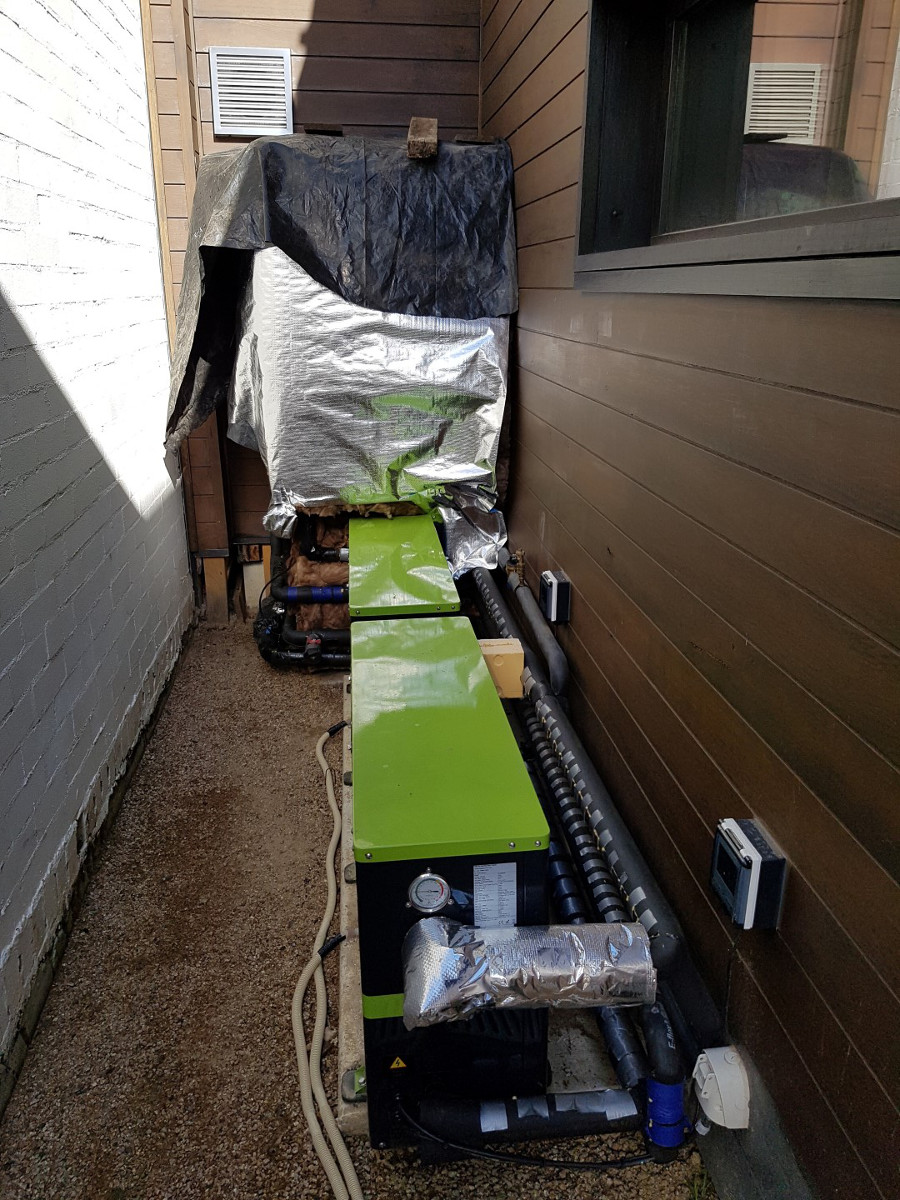
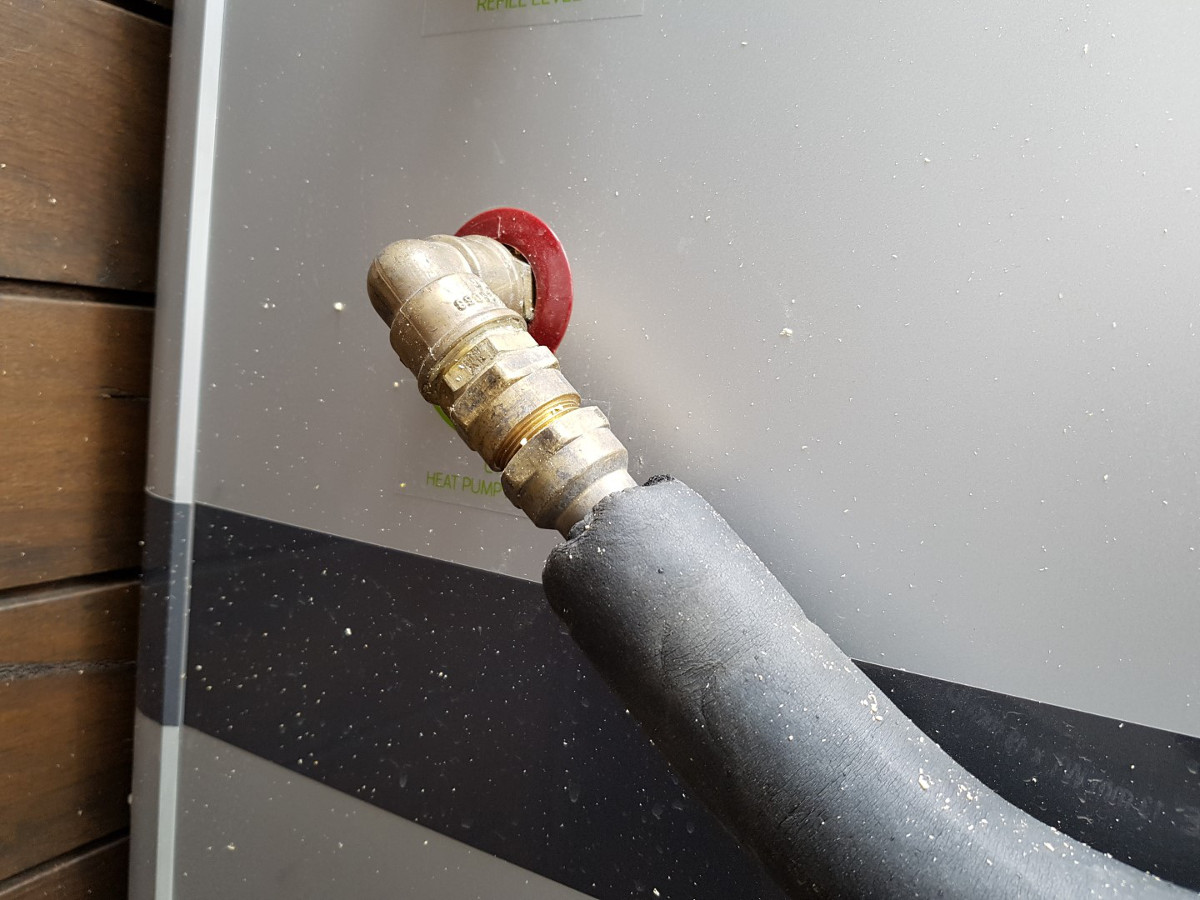
The effective heat output at winter temperatures from the heat pump is around 5.7 kW. While the supplier convinced us to buy two heat pumps we’ve only needed one in practice, even in winter when the heat pump must provide both hot water for showering and feed the hydronic system.
7.3 Heating
Heating is primarily supplied by a 2 kW hydronic floor coil in a 80 mm screed (Figure 18: ). The screed is insulated from the structural slab underneath by 80 mm of Kingspan Kooltherm phenolic foam (R4.0). The floor coil is complemented by two heated towel rails, one in each bathroom, each of 0.7 kW. This gives a total heat input into the building of around 3.4 kW. The combination of the high levels of insulation and the MVHR means there is minimal temperature variation between rooms.
Figure 18: Heating systems
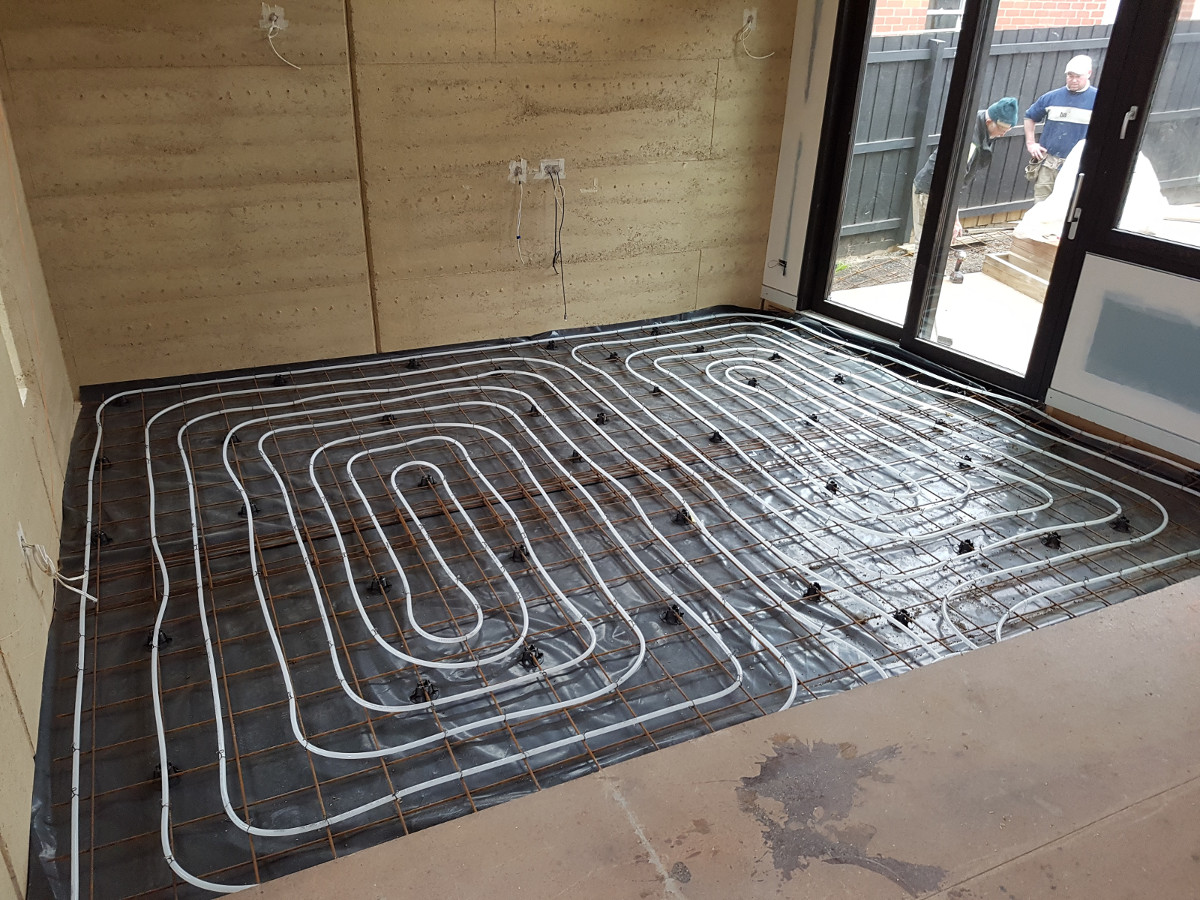
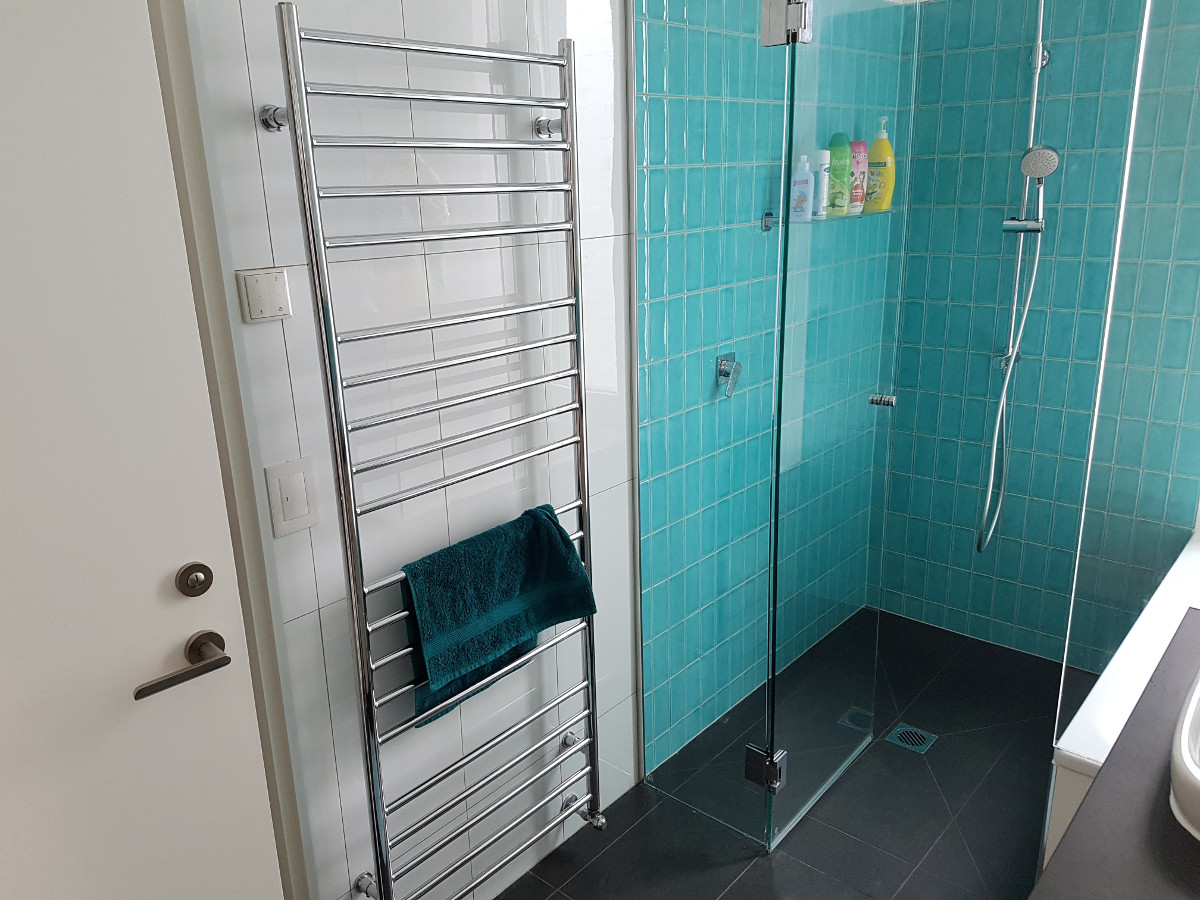
In practice the heat input is a little undersized for cooler days, particularly when overcast. Our plan is to add a couple of radiators to bring the heat output closer to the single heat pump capacity of just under 6 kW.
One of the observations we have is that the absence of drafts, due both to the absence of air infiltration and from the high surface temperatures which preclude convective air movement, means that we feel comfortable at air temperatures lower than would otherwise be the case. For example, while our previous home thermostat was set to 21C in this home temperatures of around 19C feel similarly comfortable (or even moreso).
7.3.1 Insulation of hydronic piping
The hydronic PEX piping came fitted with 6 mm of foam insulation, giving a heat loss of around 15 W/m at 50C water temperature and 10C ambient air temperature. Without insulation the heat loss is around 430 W/m. After installation the last metre or so along the pipes was left uninsulated (Figure 19: ). By our calculations the total line losses in the circuit amounted to 1.2 kW or so, which is a significant proportion of the total heat load on the radiators (3.4 kW). By insulating these uninsulated sections, and also adding a second 13 mm foam insulation layer to the already-insulated sections we estimate a reduction in line losses to around 0.32 kW. Retrofitting insulation in an enclosed underfloor area is hard, clearly it would have been better to improve the pipe insulation prior to installation.
Figure 19: Hydronic heating pipes
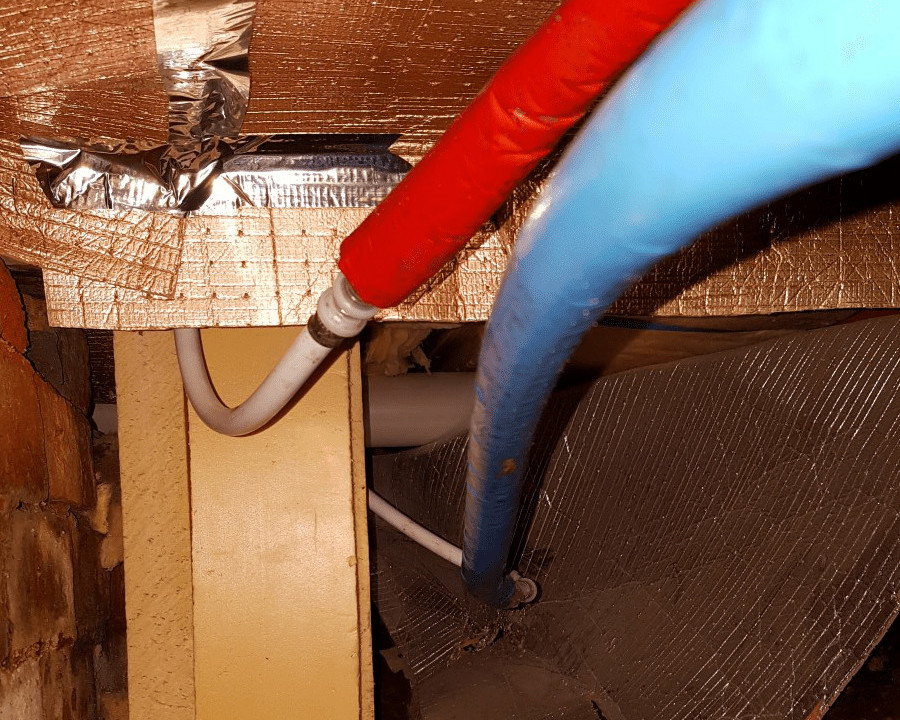
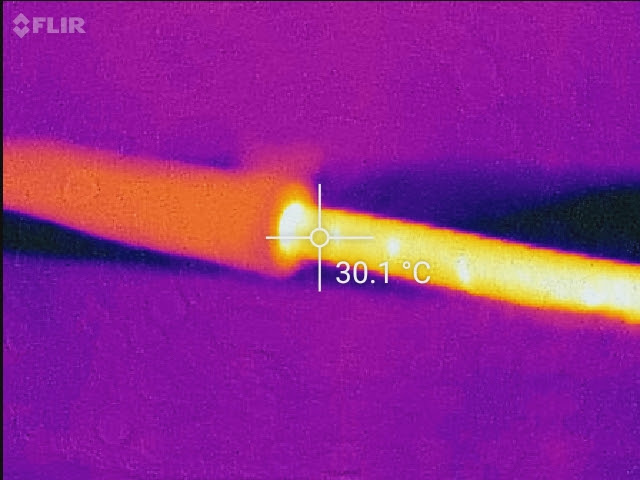
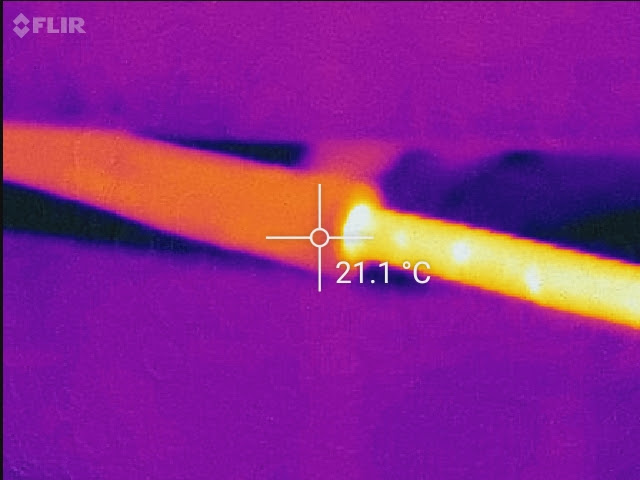
7.4 Cooling
The combination of the insulation and airtightness helps to reduce heat gains in summer. Moreover, the glass has a low solar heat gain coefficient (SHGC=0.31) which reduces the solar heat gains in summer (this works against us in winter though). The eaves have been sized to prevent the midday summer sun from striking the windows directly, and there is an external blind on one window. We’re growing deciduous trees and climbers to protect other windows, mainly those facing west.
When required we’ve also got a Daikin Cora 6 kW air conditioner to provide additional cooling (this also provides additional heating in winter when required).